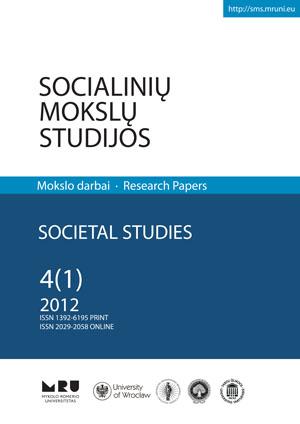Lietuvos investicinių fondų rodiklių ir makroveiksnių vertinimas
Integrated Evaluation of Mutual Funds Indices and Surrounding Factors
Author(s): Algis Žvirblis, Vilma RimkevičiūtėSubject(s): Social Sciences
Published by: Mykolas Romeris University
Keywords: mutual fund; surrounding factors; integrated evaluation; forecasting the volume of capital; multicriteria methods
Summary/Abstract: This paper deals with an integrated evaluation of mutual funds functioning in the country’s financial markets. The paper discusses background of the evaluation of factors surrounding stock mutual funds (primarily stock mutual funds) as well as the capital changes. The article presents a classification of mutual funds, the review of changes in Lithuania’s mutual funds market. The existing research and methodological potential (also evaluation methods of mutual funds important indices) has been analysed; this analysis serves as a basis for determining the directions of subsequent improvement of integrated evaluation. In the case of complex evaluation of mixed mutual funds, in addition to calculation of the revenue and risk parameters, Sharpe ratio and forecasting of stock prices within the portfolio, it is proposed to include evaluation of significant surrounding factors. This is a particularly topical issue under the conditions of dynamic changes in surrounding factors. When developing a theoretical basis, it is expedient to apply quantitative evaluation methodology using multiple criteria methods. On the basis of the performed study, application of the Simple Additive Weighting (SAW) method was grounded. Therefore, an opportunity is provided for the evaluation of both different significance of primary indicators determining the general surrounding favourability index. Firstly, the identified primary indicators are evaluated by means of expert examination in the 10-point system, with the significance of each of them established concurrently. On this basis, the complex of essential social, economic as well as international surrounding factors was constructed. The basic adaptive evaluation model for determining general surrounding favourability index is reflected. The unity of the suggested model is the applicability of different, not predetermined, significant parameters of primary surrounding factors, i.e. their adequate differentiation. Moreover, it is appropriate to forecast controlled capital amount and mutual funds unit value trends on the basis of partial utility functions or multiple regression. The conducted study and evaluation have allowed for establishing dependence of the controlled capital amount on correlating macroeconomic indicators of the stock mutual funds. The performed theoretical study gives a basis for application of the quantitative evaluation methods and formalised evaluation procedures in financial markets. While investing in a certain mixed mutual fund, it is also useful to take into account the forecasted data of the funds net asset value and to the results of evaluation of the favourability of surrounding factors. The methods presented in the paper allow comparing mutual funds indicators with other alternatives of long-term investment, such as other investment funds. In case of application of this evaluation process, it may be integrated into the overall support system for the reasoning
Journal: Socialinių mokslų studijos
- Issue Year: 4/2012
- Issue No: 1
- Page Range: 111-123
- Page Count: 13
- Language: Lithuanian

